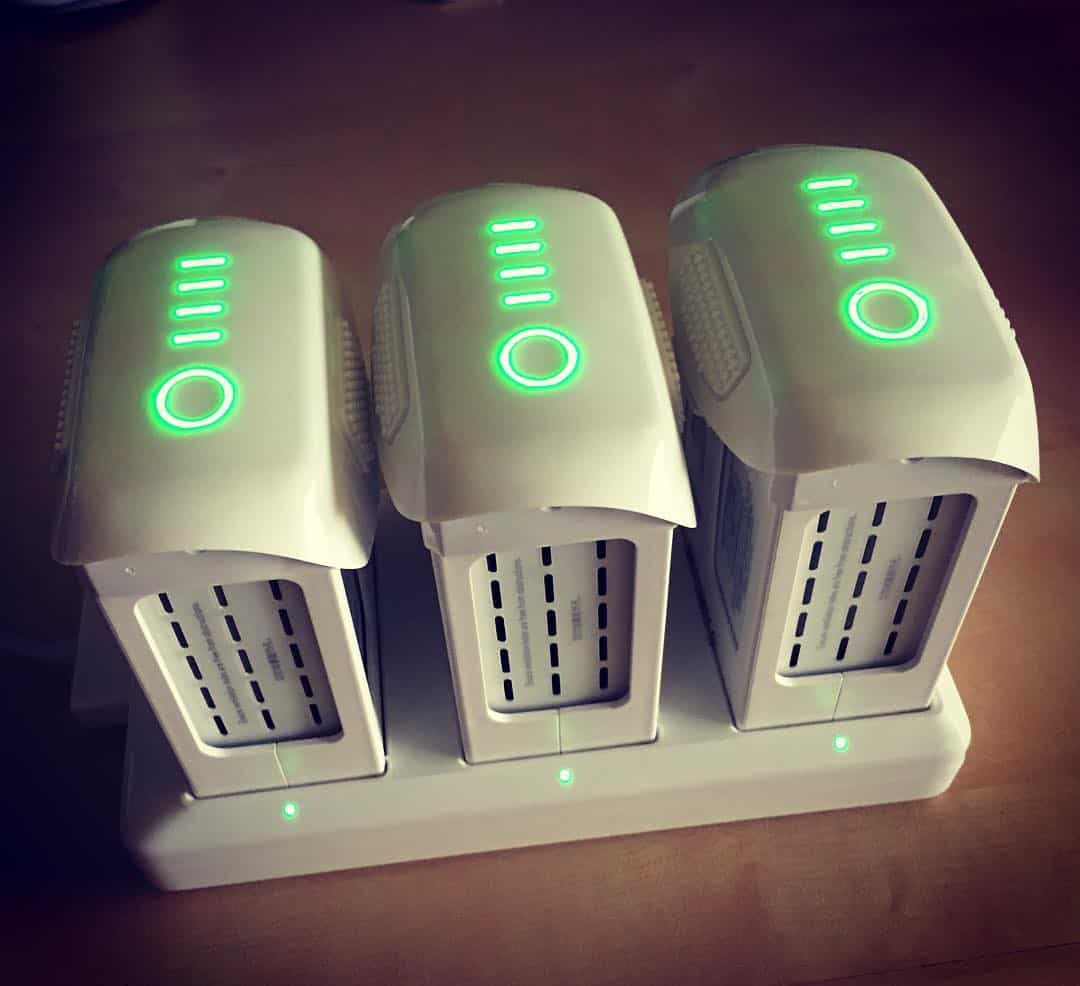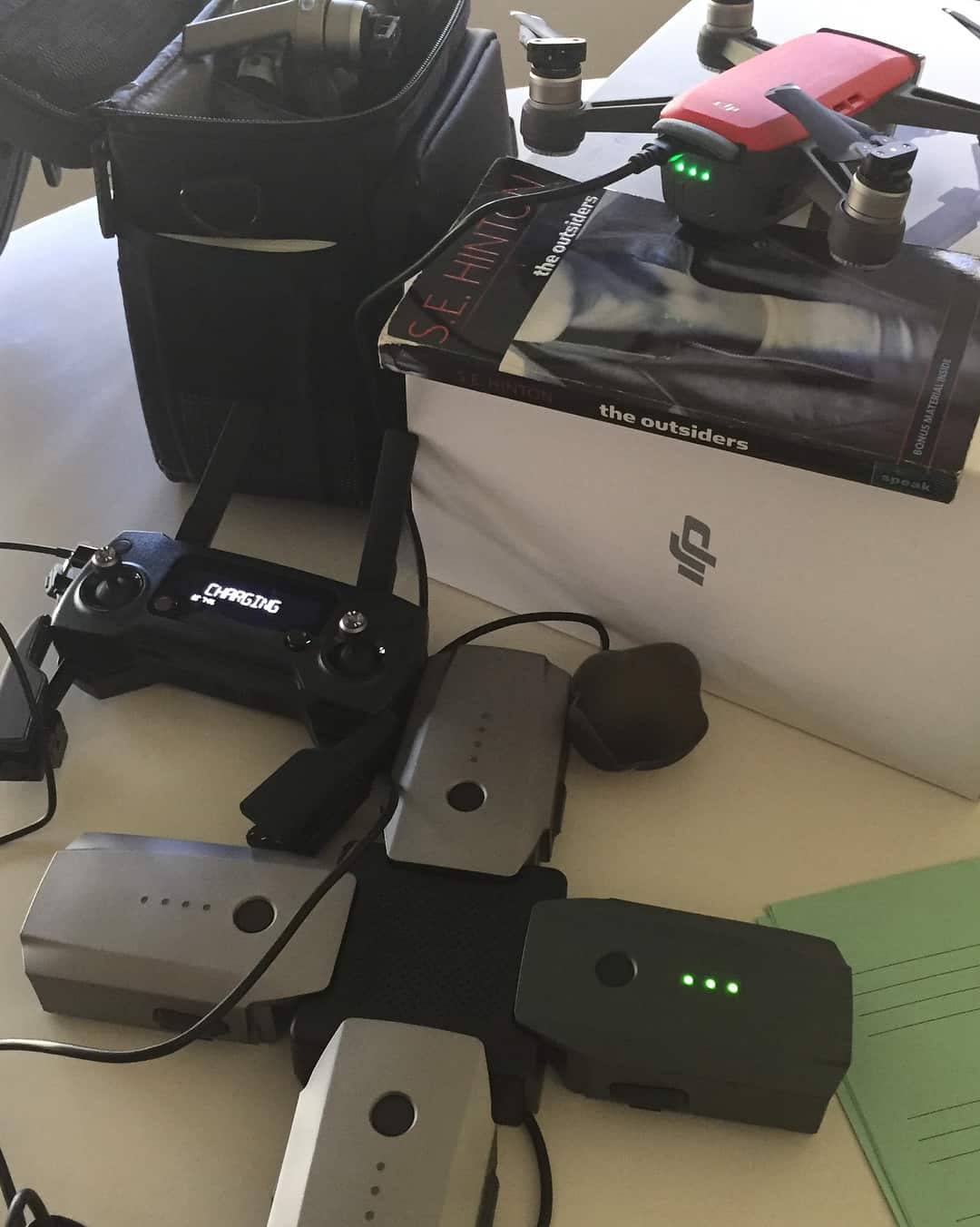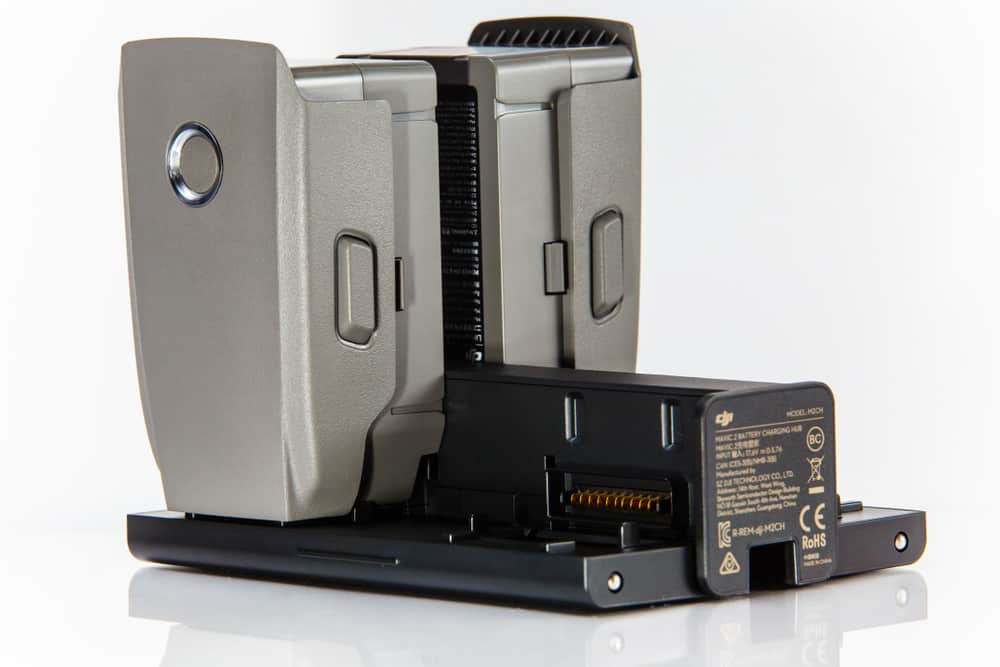Until the last decade or so, drones were something only the military “played” with.
However, drones are becoming increasingly ubiquitous as they are used by photographers, videographers, delivery companies, and ordinary people who discovered a super fun hobby in them.
But all of them face a big problem: short battery life. Because of this, the drone manufacturers produced a flight battery charging hub, which does not directly solve the problem of short battery life but helps it mitigate and makes the life of drone enthusiasts much easier in many ways.
One of those hubs is the DJI battery charging hub, produced by the Chinese technology company DJI which is the biggest player in the drone industry in the world.
Keep reading to find out exactly what kind of charging hub they produce and its many advantages.
Table of Contents
What Is A DJI Battery Charging Hub?
DJI battery charging hub is a device that allows charging multiple batteries that power drones. These hubs usually come with two, three, or four slots to which you can connect and charge your drone’s flight batteries.
They support Quick Charge (QC) and USB Power Delivery (PD) protocols for charging and come equipped with LED lights for checking the state of the battery charge.
There are many DJI battery charging hubs on the market, such as the Mini, Phantom, and Mavic battery charging hubs, which are used for charging the batteries of some of the most famous drone models DJI produces (Mini, Phantom, Mavic).
But there is even bigger diversity in battery models that differ in parameters such as capacity and voltage. For this reason, you need to look at the hub’s specifications to see the compatible battery model or models before you decide on a purchase.
Why Do You Need A Charging Hub?
As we believe many of you know, flight batteries can be charged in drones, that is, you can use the drones as a battery charger. It is precisely why many drone fans, especially those just starting their aerial adventure, do not decide to buy a charging hub. It looks like a waste of money, doesn’t it?
However, the first reason why you should consider buying a hub is that using the drone as a charger hinders its flying availability. While charging the battery, it will stay on the ground, which probably is not where you intended to use it.
Another reason is that you can use the drone as a charger for only one battery, which means that after the battery is used up, you will not be able to use the drone for a while because you will be busy charging the battery.
You can solve this problem to some extent by buying additional batteries and charging each of them in the drone before you go outside and start flying the drone.
But isn’t it easier to buy a Mini or Mavic charging hub, put two, three, or four batteries in it, and let it do its work without you having to worry about every single battery?
Sequential Charging

One of, if not the biggest, issue the drone industry has is battery life. Several models can fly around 40 minutes on a single charge but only under perfect conditions, i.e., in a lab environment.
The more efficiently and faster you fly, the more weight you add; the stronger the winds, the faster the drone’s battery drain. There is also the time it takes for the drone to take off and land, which is sometimes overlooked in flight mode specifications given by manufacturers.
All this is to say that in most cases, one battery is not enough for one flying session. Having two or three might be enough, but what if you use this professionally, filming a wedding, for example? Three batteries will not cut it.
It is where sequential charging comes into play. When you put more than one battery in the charging hub, it detects the one with the least power level, charges it first, and then switches to charging the next one.
So this means that, in theory, your drone could stay in the air almost forever. Okay, it will have to come down for a change of battery, of course, but that takes only a couple of seconds.
It Is Not Just A Drone Battery Charger
Although this device is primarily intended for charging drone flight batteries, that is not its only use case, being a two-way charging hub.
On the side of the charging hub, you can see a USB Type-A output that you can use to charge your mobile device, tablet, Bluetooth earphones or speakerphones, or some similar device, which means that you can turn it into a power bank.
Of course, in order to be able to use it for this purpose, there must be at least one battery with some charge in it since the device you connect to the hub will be charged by drawing power from the battery.
Charge Time And Price

You are probably saying, “All these features sound great, but what about charge time and price?” After all, time is money, and money is money, right?”. Well, we have good and neutral news for you on the charge time front.
Fully charging a Mavic Mini or Mini 2 battery with a USB charger (power supply of 18 W) takes 90 minutes, while the same operation with a 36 W charging hub lasts 50 minutes. The batteries the Spark drone model uses are charged in min. 80 minutes with a USB charger, while the hub does it in 55 minutes.
However, batteries of some models, such as Mavic 3 or Phantom 4, need the same amount of time to reach full charge regardless of whether you charge them using a USB charger or charging hub (approx 96 and 70 minutes, respectively). In this case, the hub does not seem like such a good investment but do not forget that you can charge more batteries and use the drone simultaneously with it.
Anyway, before buying any drone, battery, or hub, it would be nice to look at the USB vs. charging hub charge time variable and add it to the final equation.
The prices of these products range from $20 to $90. The exact price depends on a number of factors, such as the number of slots in the hub, the battery model it supports, etc.
Pro Tip:
If you want to increase the charging efficiency to the max, use a 100W USB-C charger and cable. Using this type, you can reduce the charge time of the Mavic 3 battery from 86 minutes to less than an hour (the exact time depends on factors such as room temperature and battery health).

Whether they use a charging hub or not, many drone aficionados like to fully charge their batteries after they finish their flight session and leave them inside the drones or hubs for days.
But many people don’t know that this is one of the biggest DON’TS regarding the drone hobby (but also Li-Po batteries in general).
- Shorten the life of the battery
The first reason why you do not want to do this is that you can shorten the life of your battery and thus cause damage that you can not reverse.
- Li-Po battery could swell
You might not care about this that much, but the second reason will definitely make you think twice!
In the instruction manual of, for example, the Mini or Mavic intelligent flight battery, the manufacturer states that the fully-charged battery is automatically discharged to 96% if it is not used for a day in order to prevent swelling.
However, this only applies to batteries that are not stored inside a drone or charging hub.
It means that the Li-Po battery stashed inside the hub or drone could swell, making it potentially unusable. But if it gets punctured while in that state, it will release hazardous gases. Even worse, it could cause a fire in the case of overheating.
In order to avoid one or both of these unpleasant scenarios, if you do not plan to use the batteries for the next 48 hours or more, store the batteries in a cool, dry place (the temperature should be between 70˚F and 82˚F) at a charge between 40% and 60% (Li- Po batteries do not like to be fully discharged either).
You can discharge fully-charged batteries either by using the drone until the battery’s power drops to the desired level or by using the charging hub as a power bank and charging one of your electronic devices.
Conclusion
Hopefully, this was a helpful article for all you current and future aerial experts in which we listed the most important information regarding the DJI battery charging hub.
Sequential charging, two-way charging, QC and PD charging protocols, and faster charging times in certain models – there are many benefits to using this device.
As always, you are more than welcome to ask questions in the comment sections if something is tickling your mind regarding this subject.
PS Do not forget to discharge the battery and store it somewhere if you are not going to use it for some time!
